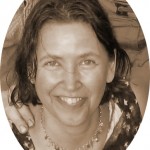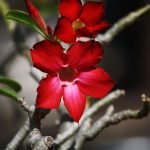Earth Cure
Returning to Nature
Sussanna Czeranko, ND, BBE
It is my experience that a mud poultice applied to the head, relieves headache in most cases. I have tried it in hundreds of cases. Headache may be due to several causes, but whatever the cause, as a general rule, an application of mud poultice relieves it. – Mahatma Gandhi (1954, p. 8 )
Since the remotest ancient time till today there always rose men who taught the return to nature as the only safe remedy from all suffering and adversities. Today, in our age of the great discoveries and inventions, the highest culture and science, there has instead of the greatest happiness which was expected a general consumption set in and more than ever grave nervous diseases, which fret on the marrow of our people and drive it to the edge of perfect exhaustion. – Adolf Just (1910a)
WE DO NOT CURE DISEASE. We teach you how to remove its causes – Nature will do the curing. – FA Neuburger, ND (1910)
The earth story is indeed a rich one and begins in the naturopathic literature with Adolf Just, his book Return to Nature and the Yungborn sanitarium that he built. The book gained many followers including Mahatma Gandhi and the American naturopaths, such as Benedict Lust and Henry Lindlahr. Originally written in 1896 in Leipsig, Germany, the book was translated by Benedict Lust and H. Nesbitt into a best selling book around the world. Just’s Yungborn was a healing sanctuary built in nature that became the model for others.
In his book, which he dedicates to the sacred domain of nature, he describes the habits of animals. The fox, the badger, the wild boar will “always clear away wood, leaves and even snow to make a clear space on the ground to lie down and rest upon, wallowing on the bare earth” (Just, 1912, p. 75). Animals, who have been injured by gunshot, and poisonous bites, will cover the injury with earth. Just shares the personal accounts of Dr. Zell who witnessed “animals shot in the upper part of the body, the shot sometimes having passed right through, stand for a long time, half a day or even a whole day, up to the neck in mud and then come out completely healed. Just asks, “Why do the animals fear no bacilli and why does blood poisoning never ensue?” (Just, 1912, p. 82).
Just was fearless to the application of earth to the human body and viewed the contamination by microbes and bacilli as “an example of the pernicious error of human science” (Just, 1912, p. 80). Bacilli were everywhere in the material world. Medicine focusing on the bacilli were erroneously pinpointing the cause of disease on the microbes rather than the “consequences of a false mode of life” or poor lifestyle habits. This reasoning reminds us of the theories that viewed the terrain as more decisive in disease manifestation.
Lust seems to chastise his readers for becoming “so civilized that we hear no more the voice of conscience, the language of Nature” (Lust, 1910, p. 232). Just continues the admonishment: “No attention is paid to the powerful influence of the earth in regard to wounds and [dissolution] of diseased matter, for alleviating pain” (Just, 1910a, p. 642). Just recommended direct applications of earth to local inflammation, fevers, blood poisoning and open wounds (Just, 1912, p. 79). The accounts of miraculous cures overflow in Return to Nature leaving the reader convinced if not curious of the possibilities of ‘earth cure.’
One anecdotal letter that Just (1912) received from a reader in South Africa compares the healing of two people and their broken arms. The reader and his driver had an accident where their carriage overturned and each broke their arm. The reader went to his doctor and the arm was casted and after 6 weeks was healed; yet after 25 years, the arm continues to be stiff. His driver went to a local medicine man and was put into a hole in the ground and covered with earth. “In about five days the arm was perfectly cured and not the slightest trace of lameness remained” (Just, 1912, p. 83). The confidence that Adolf Just had in the healing powers of earth helped galvanize many to try and use the various applications that Just used.
The famed story of the Return to Nature spread far and wide. Just’s (1912) book made a lasting impact on Gandhi who became a devout advocate of the nature cure therapies that Adolf Just championed and employed them in his Indian ashram that was modeled after Just’s Yungborn. Gandhi (1954) was not afraid of applying earth poultices to typhoid fever, wasp stings, scorpion bites, boils, and discharging abscesses. He used earth poultices and compresses to his followers and family.
A doctor practicing Nature Cure in Australia writes to Just: “I have set up nature-beds. … These are boxes a foot high, filled with earth and strewn with a soft kind of grass. These beds are made every day by watering the grass and the patients assure me that they sleep as if they were in Paradise” (Just, 1912, p. 77).
The Abdominal Earth Compress
The abdomen was considered by the early naturopaths as the seat of all diseases (Lust, 1910). The dangers of toxemia and morbid matter dominated the writings of the early 20th-century naturopaths. Tilden (1926, p. 27) proclaimed that “without toxemia there can be no disease.” “The origin of all diseases have but one cause, ‘an unnatural mode of life,’ causing impure blood” (Neuburger, 1910, p. 88). Lust writes of the virtues of applying damp earth or clay in removing all morbid matter. “… All the common diseases and ailments, as cutaneous eruptions of various kinds, ulcers, ear and eye complaints, pulmonary and abdominal affections, diphtheria, diseases of the throat, of the sexual organs, female troubles, tumors, paralysis, gout, and all kinds of pain are really cured and healed by applying earth” (Lust, 1910, p. 232).
“Nothing can so much cause our admiration than the earth in its healing power” (Just, 1910b, pp. 713-714). The earth compresses applied to the abdomen were heralded as a cure for reducing fevers, acute diseases, typhoid fever, scarlet fever, measles, influenza and the surest remedy for soothing PAIN. Just, being a pacifist and interested in the betterment of people, believed that the earth bandage would be “the greatest use in war” (Just, 1912, p. 85). Using the earth bandage would result in less pain and less suffering because “when a warrior is wounded he has always earth close at hand” (Just, 1912, p. 86).
Making an Earth Bandage
The guidelines to making an earth bandage involve pieces of gauze and clean earth. Just strictly advises that “the earth bandage is made by placing earth … immediately upon the wound and placing a bandage on it to keep it in its place. There should be no linen rag placed first on the wound to prevent the earth from coming into direct contact with it” (Just, 1912, p. 86). The earth application can be renewed “at first every few hours especially in inflamed wounds and lesions of the skin. Afterwards it may remain longer, perhaps for a whole night or day” (Just, 1912, p. 86).
The recycling of the earth compress was practiced by Mahatma Gandhi. “Mud used as a poultice on a clean surface need not be thrown away after use. It can be used again and again after drying it in the sun or on the fire and pounding and sieving it. … I have myself used it in this way and did not find it any the less efficacious for repeated use” (Gandhi, 1954, p. 10).
For constipation, Gandhi followed Adolf Just’s prescription of “applying to the abdomen a bandage of clean earth moistened with cold water and spread like a poultice on fine linen. This I applied at bedtime, removing it during the night or in the morning, whenever I happened to wake up. It proved a radical cure” (Gandhi, 1954, p. 27).
I have personally witnessed the magic of earth bandages. A male patient, age 64, had called my office in distress and shock. He had accidentally sawed three of his fingers and on examination the cuts were very deep. Earth [obtained from Heviz, Hungary] was applied directly to the severe cuts and bound by gauze. On examining the fingers the following day, the fingers made remarkable recovery but what truly was remarkable when I examined the fingers two weeks later, was that there were no scars. In fact, the patient forgot which hand sustained the injuries.
The stories that I could share of the miraculous healings that I have experienced have made me quite enamored with Adolf Just’s story and his passionate contributions to naturopathic medicine. Earth therapies in the form of peat, moor and mud continue to have a dominant place in the medical tool bag in European countries. Peat baths and wraps are used for rheumatic diseases and skin diseases such as acne, psoriasis, eczema, ulcers, cellulitis, etc. (Uosukainen, 2006). Peat vaginal suppositories and baths are used to treat cervical dysplasia and cancers. Peat therapies treat a wide range of complaints such as HIV. It’s time for us to return to nature to feel the earth beneath our feet and listen to her secrets.
Sussanna Czeranko, ND, BBE is a licensed naturopath in Ontario and Oregon. She is currently a faculty member in the Advancement Department at NCNM conducting historical research in its rare books room. She is applying these studies to the creation and delivery of an ongoing curriculum centered on nature cure, including balneotherapy and Buteyko, a Russian breathing therapy. She is a faculty member working as the rare books curator at National College of Natural Medicine. She is currently compiling several books based on the journals published by Benedict Lust. In addition to her work in balneotherapy, she is the founder of The Buteyko Academy, a training program for NDs to incorporate a scientific model of breathing therapy called Buteyko into their repertoire.
References
Gandhi, M. K., and Kumarappa, B., ed. (1954). Nature Cure. Ahmedabad, India: Navajivan Publishing.
Just, A. (1910a). The new paradise of health: The only true natural method, part I. The Naturopath and Herald of Health, 15(11).
Just, A. (1910b). The new paradise of health: The only true natural method, part III. The Naturopath and Herald of Health, 15(12).
Just, A. (1912). Return to Nature (H. A. Nesbitt, Trans.). London: Routledge.
Lust, B. (1910). The Earth as Curative. The Naturopath and Herald of Health. New York, NY: Benedict Lust Publishing.
Neuburger, F. A. (1910). Return to Nature. The Naturopath and Herald of Health. New York, NY: Benedict Lust Publishing.
Tilden, J. H. (1926). Toxemia Explained. Denver, CO: J. H. Tilden.
Uosukainen, H., and Pihlaja, K. (2006). Peat in Balneology and Therapy. Kempele, Finland: Terraviva Oy Publishing.










